About Diana Meng:
Diana Meng, of Cumberland County, PA is a Chinese watercolor artist and teacher. She spoke with folklorist Amy Skillman about the importance of knowing one’s heritage and the healing power of patience.
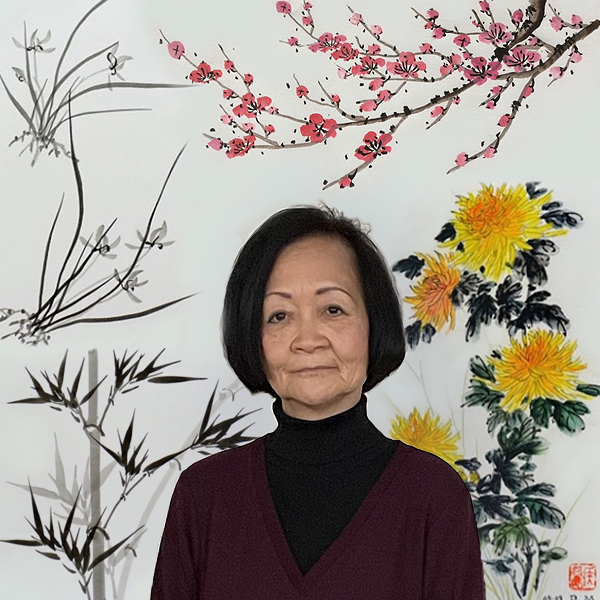
Diana Meng with “the four gentlemen” of classical Chinese painting: bamboo, orchid, plum and chrysanthemum.
About Diana Meng
The first brushstrokes
Diana Meng, whose Chinese name is Hou Siao Ching, practices the ancient brushwork of Chinese watercolor and calligraphy. She was born in China but grew up in Taiwan, having moved there as a toddler with her family.
Diana started studying Chinese watercolor as a teenager. Her aptitude for painting is bred in the bone: her mother’s family had several painters, including her aunt who also emigrated from China to Taiwan and then on to Hong Kong.
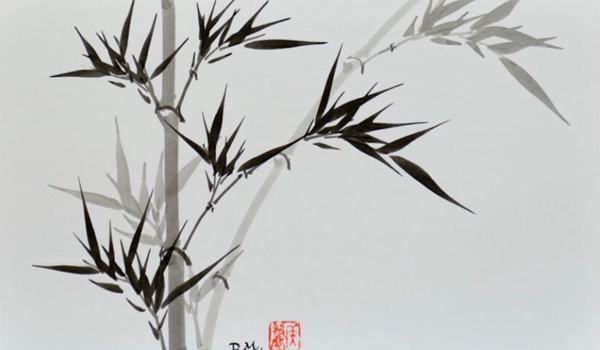
While studying commercial art in college — she earned her degree in fine art from the Chinese Culture University in Yang-Ming-Shan — Diana continued studying classical Chinese painting with several master artists whom she visited off-campus weekly. One of those teachers, in particular, not only taught her the principles of Chinese watercolor, but modeled how to teach it to others. She credits him for her ability to teach today. “He was very good at explaining things.”
When she first came to the United States to study art and design in graduate school at West Virginia University, she admits to crying every day because she missed her life in Taiwan so much. Then she met her future husband and they eventually moved to Harrisburg where she worked with Capitol Blue Cross until retirement. She has been in the United States for over 50 years. She says, “Sometimes I still need to think in Chinese and then translate to English, but this is my home.”
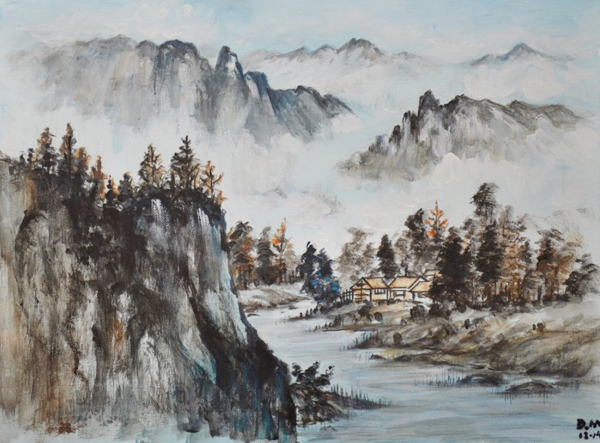
Teaching heritage
Diana Meng has been teaching for over 20 years. She offers classes in watercolor, calligraphy, and Chinese language at the Chinese Cultural and Arts Institute in Harrisburg, Pennsylvania. Her students range in age from six years old to adults. She enjoys sharing her art with young people.
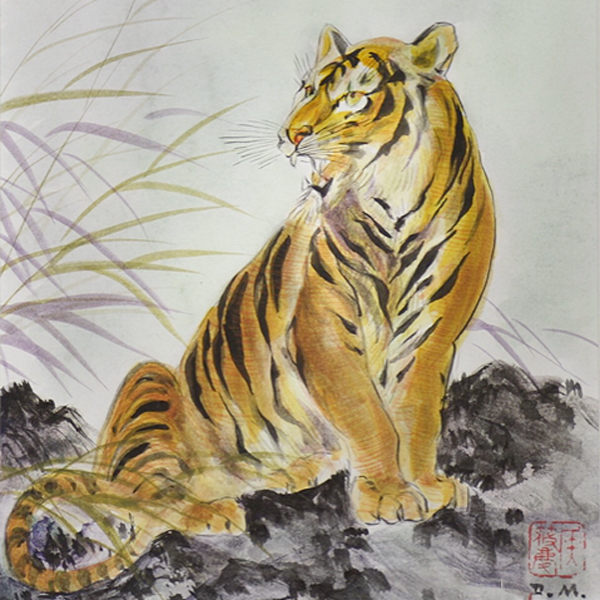
photo courtesy of the artist
“Most of my students have Chinese heritage, but do not speak the language. Some are from mixed families and it is necessary to teach them Chinese history and the Mandarin language so they understand more about their heritage.” So while teaching the techniques of calligraphy or painting, she also shares the language and provides the cultural and historical context for Chinese arts.
Diana feels it is especially important to instill in her students the custom of respecting one’s teacher. She sees this as an essential part of their Chinese culture. “All my students are good, very well behaved and respectful.”
Teaching patience
An important aspect of that Chinese heritage is xiū xīn yǎng xìng — to improve oneself through meditation. Patience and contemplation are at the heart of Chinese painting. Diana says, “My students learn how to be patient and to become skilled at the process of making their ink preparations long before they start painting.”
It can take several months to master the consistency of the ink. Beyond that, it can take years to master the brushstrokes.
Students soon learn that everything works together: the quality of the ink, the absorbency of the paper, the amount of water in the brush at any moment, the changing pressure of the brush on the paper, the delicate movements of the fingers, the texture of the brush hair. The true artist will have not only a mastery of the traditional techniques (which takes a lifetime!) but also the disciplined creativity to create fresh beauty within the ancient tradition.
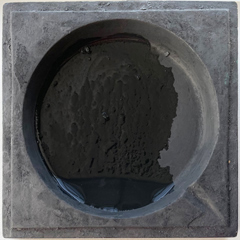
Diana’s ink stone
The Four Treasures of traditional Chinese study are the brush/pen, the rice paper, the ink-stone, and the ink-stick. Each is dependent on the others.
At left: Diana’s heirloom ink stone
A precious stone
The ink-stone is a shallow mortar in which solid pigment is ground into water to produce ink. Diana still has the ink-stone (pictured above) handed down through her mother’s family, which she says is a very good one.
“I always say it is my treasure... we don’t know how old it is because that was a long, long time ago.”
The ink-stone is considered the very heart of the scholar’s and artist’s studio, and is a unique icon of Chinese culture Often elaborately decorated, they are valued as “more precious than gemstones.” [1] They can be created out of river stone (three particular kinds of stone are favored), porcelain, fine metal, or even fragments of a broken water jar. Some have been excavated from tombs dating to the third century B.C.
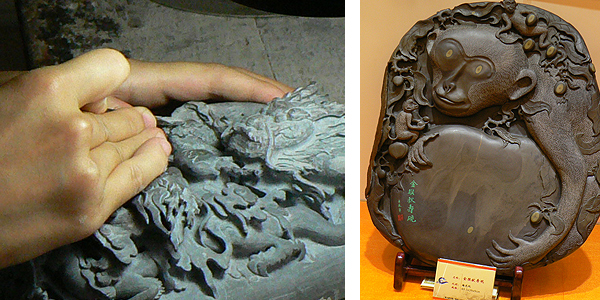
photos by Amy Skillman
Ink for eternity
Chinese watercolor is created with ink which, traditionally, is hand-ground by the artist by rubbing an ink-stick on an ink-stone. The tone and density of the color depend on how much water is in the ink and how much water is on the brush. Black is considered an important color and many paintings are done solely in black.
According to Chinese arts columnist Peter Zhang, the handmade Chinese ink can stand the test of time longer than synthetic inks widely used in the West. In fact, he says, “Chinese calligraphy and paintings created with such ink usually can keep their freshness even after centuries of display.”
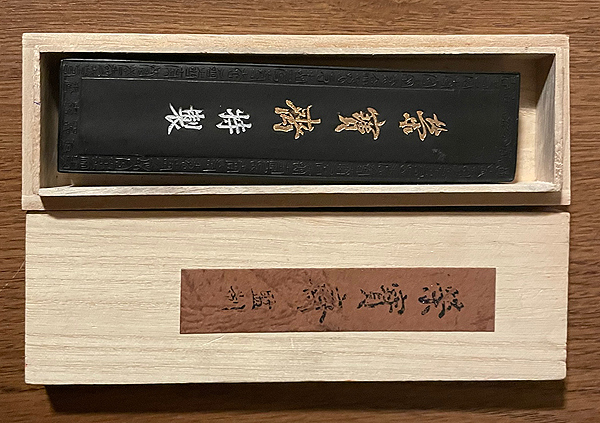
Diana’s ink stick — photo courtesy of the artist
Ink-sticks are made from lampblack and glue. Lampblack is fine carbon — like the black soot that rubs off on your fingers if you pinch a candle wick — and is made by burning vegetable oils or specially selected wood. The glue is traditionally made from animal hides or horn. A good ink-stick might last several years. It produces a darker color and is less fragile than cheaper ones.
To make ink, the artist drops some water onto the stone’s surface and then rubs an ink-stick on it. As tiny soot particles from the ink-stick begin to accumulate, the water becomes ink, eventually becoming dark enough for writing or painting. This can take some time, giving the artist an opportunity for meditation.
Fluid gestures
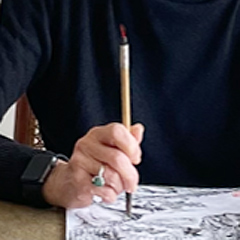
photo courtesy of the artist
Once the student has learned to grind ink to the desired color density, the next step is to learn how to hold the brush. As Diana explains, “it’s different than the Western watercolor brush. You hold it up straight, not on an angle. You cannot bend [the wrist] down.” Chinese writing requires equally fluid movement in all directions, not just across the page as in Western writing. The pressure from each individual finger directs the brush’s movement.
Traditional Chinese brushes were made of jade, gold, silver, or ivory. While plastic brushes are available, Diana prefers brushes made from bamboo. Their bristles (animal hair such as wolf, goat, rabbit, or sheep) stay attached and they feel better in her hand. She has some brushes that are 50 years old and still working beautifully. She has brushes in many sizes, but says, if you are really good, you can make all the strokes with the same brush, even the tiniest thin line.
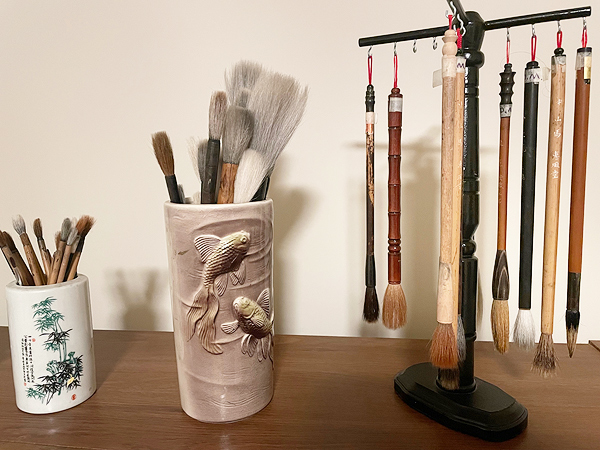
Diana’s brush collection — photo courtesy of the artist
“You need to be patient, because you can’t just do once and get it. You need to practice all the time. ”
It begins with bamboo
In Chinese painting, the four basic brush patterns are called The Four Gentlemen: bamboo, orchid, plum, and chrysanthemum. Traditionally, they represent the four seasons, and Diana teaches them in that order. Students can spend five years learning one pattern. “After learning all four,” she says, “you can paint just about anything.”
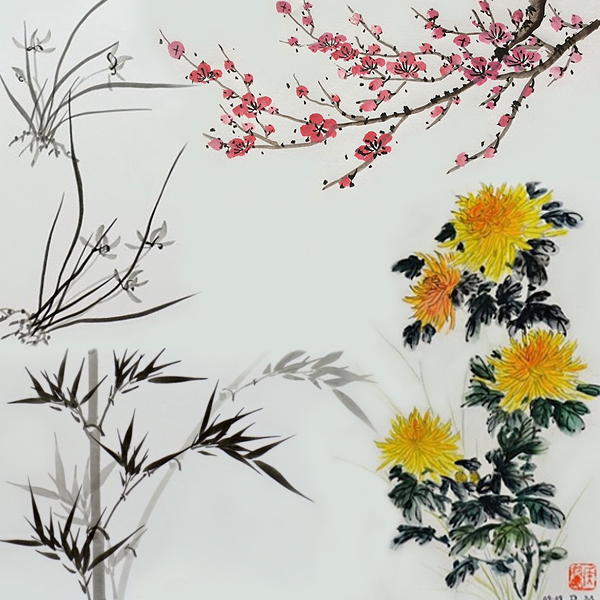
images courtesy of the artist
Diana starts her students with Bamboo. They learn to hold the brush properly and to control the density of the ink. “First you do the stem — you need to make sure you hold the brush straight, okay? — Then you need to do the branch, the notch, and then the leaves — always with a straight brush, especially when you do leaves.”
Once the student has mastered Bamboo, they can move on to the Orchid, then the Plum, and finally the Chrysanthemum. They learn the first two in shades of black and grey. By the time they get to the plum, they might be ready to start adding color.
Diana makes her students work for months on the bamboo, but to ensure they don’t get bored, she might teach them how to paint a crab at the same time. It keeps them interested. She also mounts her students’ work when it is finished, to celebrate their artistic achievements.
“It’s a discipline,” Diana tells her students. “You need a practice for yourself, for your own enjoyment, not to make money.”
Diana doesn’t push her students, especially if they don’t have the patience or the passion for painting. Either they will come to it eventually, or they will find something else. For those who want to pursue art as a career, she says, “I always encourage them. School, you must be a good student because if you do the fine arts, it’s really hard, you know, to look for a job after you graduate.”

Stories in landscapes
Diana’s work ranges far wider than the Four Gentleman. She is especially adept at painting traditional Chinese landscapes, combining the three basic elements of mountains, rivers, and a waterfall. Diana graces her mountains with trees, and her rivers might have a boat or fisherman to draw the viewer in. “For me,” she says of those small details, “that’s just imagination.”
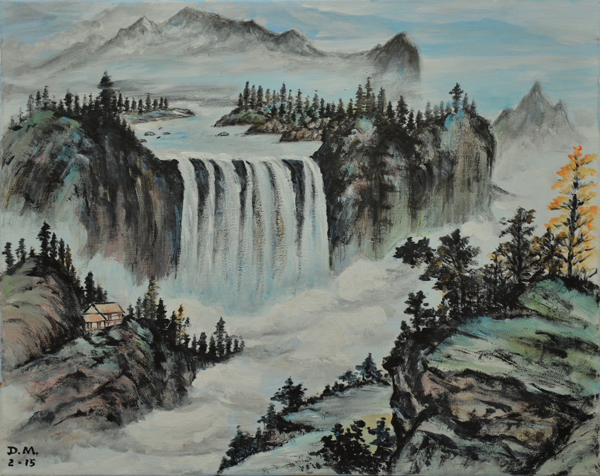
Traditional Chinese landscape paintings were meant to capture the spirit of the world; they were meant to speak to feelings rather than document actual places. They are used for reflection and contemplation and therefore have less detail than modern Chinese paintings.
In recent years, Diana has experimented with acrylics in her paintings. She appreciates that the clean-up is so easy and she enjoys exploring different themes. But she always returns to traditional Chinese themes to calm her mind and to maintain a practice that connects her to her heritage.
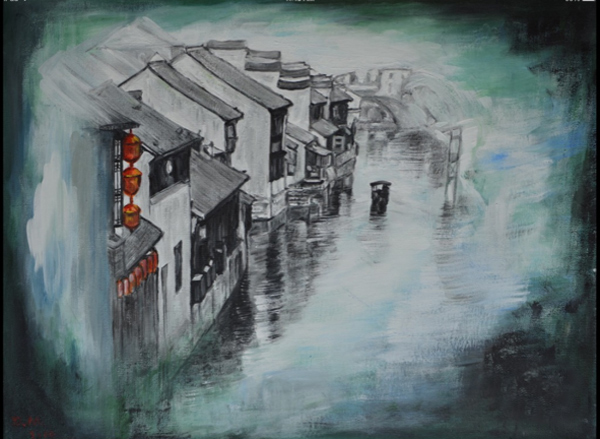
Teaching healing
As a form of meditation, the process of painting can be very therapeutic. During the COVID pandemic, Diana did some webinars teaching Chinese painting. In fact, she did one for the Yale Health Care Alumni and also for local health workers and doctors, especially those working in Intensive Care Units, “because, you know, the COVID, they working hard, you know? So I just did it for them and they loved it... You relax when you do it. Those Yale health workers, they feel really relaxed when they sit down to do that, you know?”
“It’s not just for decoration,” says Diana, summing it up. “To me, painting is like the Chinese saying shã shing yuň sen — it enables you to maintain good health and inner peace by quieting your heart.”
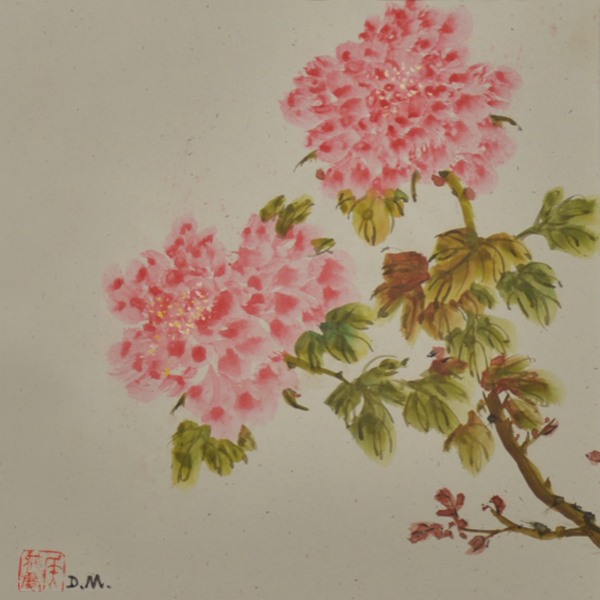
Passing it on
Diana has participated in the Pennsylvania Council on the Arts’ traditional arts apprenticeship program for many years. Some of her past apprentices are now in college and many of them still paint. They call her often to thank her for teaching them about their cultural heritage, about patience, and about the value of being a good student.
She has four granddaughters, one of whom has become interested in Chinese watercolor. This makes Diana happy because she will have someone to pass her ink-stone and other supplies on to — someone who understands and appreciates their value.
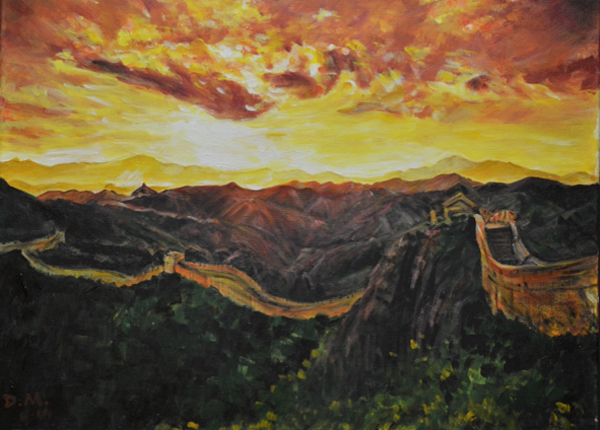
Footnote:
1. Zhang, Peter. 2018. “A stone more precious than gems.” Shine, January 19, 2018.



Brand icons for Facebook, YouTube, Instagram and other social media platforms are the trademark of their respective owners. No endorsement is implied.